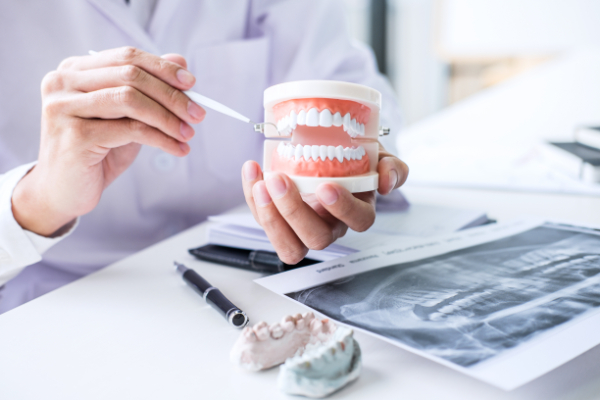What Happens in a Gum Graft Procedure from a Periodontist

You may have many questions on your mind if your periodontist tells you that you require a gum graft. Read on to learn more about this procedure. Learning about gum grafting, the process, and the recuperation period is a great step toward easing these concerns.
An overview of gum graft procedures
Gum grafting is a periodontist-performed dental treatment. It is the standard treatment for gum recession to avoid exposing the root surface of the teeth, which can lead to decay and discomfort. Gum grafts can reverse these negative consequences of the condition and restore gum health to preserve the protective barrier surrounding the teeth.
A gum graft entails taking a portion of tissue from the roof of the mouth or nearby healthy gum tissue. This portion is then grafted to the receding gum tissue. In essence, it is a two-part treatment that involves using healthy tissue to fix problems and safeguard the smile from potential complications.
Gum grafting can be done in various ways, each addressing a different periodontal issue. The degree of gum recession, the amount to which the cheek can pull on the surgical site during everyday activities, and whether the gums have receded in between the teeth or only on the front surface all influence which type of gum transplant is advised.
Gum graft procedures all entail taking donor tissue from another region of the mouth and connecting it to the receding gums. The periodontist will go through each of these gum grafting procedures with the patient and recommend the ideal option based on their unique situation and oral health history.
The gum grafting process
One of the interesting things about a gum transplant is how little preparation is required. It simply entails meeting with a periodontist to determine the severity of the recession problem and the most suitable gum grafting procedure.
There are no food restrictions or drugs to take before the operation; patients will only need to arrange for a ride to and from the dental office, as the combination of anesthetic, post-op medication, and minor pain can make being alone or driving unsafe.
A local anesthetic will be given to numb the region. In certain situations, general anesthesia may be used instead, especially if the patient is nervous and can relax more easily if asleep.
Since the periodontist has previously selected the donor tissue for harvesting and plotted out the grafting location, the gum grafting process itself is quick. Patients will be instructed to rinse their mouths with an antimicrobial mouthwash after the sutures are in place and the graft has been secured. The periodontist may also urge them to wait for an hour or two after the graft to check that everything went well.
The bottom line
During the initial consultation, the periodontist will guide the patient through the gum graft process. Make an appointment right away if you have observed the warning symptoms of gum recession. If left untreated, gum recession will worsen over time.
Request an appointment here: https://www.summitperioimplants.com or call Summit Periodontics & Dental Implants at (908) 219-6664 for an appointment in our Summit office.
Check out what others are saying about our services on Yelp: Read our Yelp reviews.
Related Posts
Appearance may be one of the first things people think about when it comes to tooth replacement. However, improved appearance is just one of the many benefits of replacing missing teeth. Tooth replacement can be key to improving not only how you feel about your smile but also boosting your oral health.Whether one chooses dentures,…
Wondering whether a periodontist can treat receding gums? Read on to learn more. Due to the increasing awareness about dental hygiene, many people are worried about gum recession. This issue is not just cosmetic: It may signal underlying dental problems that could cause serious health problems if ignored. Although routine dental care such as brushing,…
Preparing for dental implant recovery is just as important as getting ready for the dental implants themselves. A good recovery sets the stage for successful implants that can last the rest of your life, with few additional changes or fixes. Here is what to expect after a dental implant procedure so you can adjust your…
Dental crown lengthening is a procedure that aims to contour gum tissue at the base of a tooth. Oftentimes, the goal is to perform this procedure to make one's smile appear straighter, thus solving cosmetic imperfections. In other cases, dental crown lengthening is done in order to secure the base of a dental crown that…
